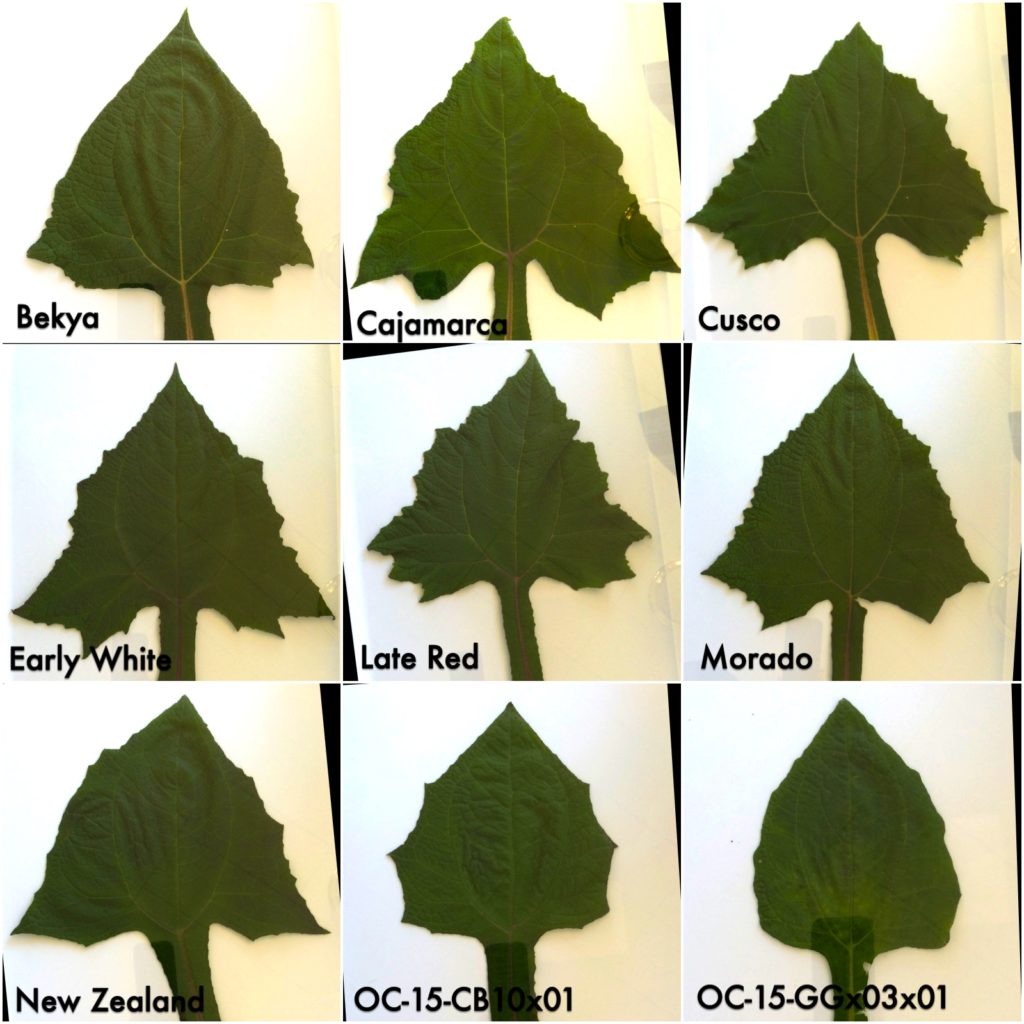Blog, yacon (Smallanthus sonchifolius)
Yacon: Leaf Shape
One of the problems that we have in maintaining and expanding our little yacon collection is that it can be very difficult to distinguish different yacon varieties. Plants look very similar in the field and the rhizomes and storage roots also don’t vary all that much from variety to variety. A few conveniently have red/purple roots, which is a big help, but most offer some variation on tan skin and white flesh.
I have been suspicious for the past few years that some of our varieties are duplicates. Even though I look at these plants every day, it is still hard to be certain. The ideal solution would be to find a grad student somewhere interested in doing genotyping on these plants, but until we make that lucky match, we distinguish varieties the old fashioned way: collecting and comparing morphological data.
As a result of these comparisons, I have concluded this year that the varieties Quito, OE, and Cusco are duplicates of Cajamarca. This is one of the varieties that has been in trade for a long time, so it isn’t surprising that it has accumulated so many names. Unfortunately, seed companies tend to give varieties new names all the time, which certainly makes things confusing for breeders who need a diverse collection to work with.
All of this introduction serves primarily to bring you this picture, which shows the leaves of each variety that we have determined to be unique:
Sorry about the odd reflections. The images looked great on my phone camera. They always do.
You can see from this picture that there are a few features of the leaf that can be very useful in distinguishing varieties. The degree of serration runs from almost nothing (OC-15-GGx03x01) to rather severe (Late Red). The shape of the base also runs quite a range, from the almost completely oblique (OC-15-CB10x01 and OC-15-GGx03x01) to the clearly hastate (Early White and Cajamarca).
Color of the midrib is also sometimes helpful, with many varieties having a white midrib, but a few having a strongly purple midrib even in the older foliage (Early White).
Leaves can be deceptive. It is best to collect full size, lower leaves and to flatten them for comparisons. (These have been flattened under glass.) Younger leaves can be very different from the older leaves and more difficult to tell apart. Alone, leaves are not always enough to distinguish varieties, but in combination with the color and shape of the flower ligules and the color of the rhizome and storage roots, it is usually easy to make a clear determination.

